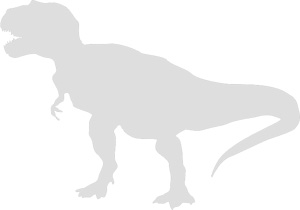Every month, 100,000 readers use the Dinosaur Database, but we receive no support from you. Developing and updating the database requires a lot of work. If you want it to remain open and be updated, please support us via the "Buy us a coffee" button available on every page or via the Support page.
Dinosaur: Yuanmouraptor jinshajiangensis

| Length*: | 5 m | 16.4 ft |
| Weight*: | 360 kg | 794 lb |
*The largest known specimen
Period
Epoch: Middle Jurassic
Stage: Aalenian-Bajocian
Years: 174.7–168.2 Ma
Details
Status: valid
Author: Zou et al.
Year: 2025
Distribution
Description
Yuanmouraptor jinshajiangensis
Yuanmouraptor jinshajiangensis was a medium-sized theropod dinosaur from the early Middle Jurassic (Aalenian–Bajocian) Zhanghe Formation of Yunnan Province, China. The holotype was discovered in Xiabanjing Village, Jiangyi Township, Yuanmou County (Chuxiong Yi Autonomous Prefecture). The genus name combines Yuanmou, the locality of discovery, and raptor, Latin for “robber”, while the species name refers to the Jinsha River, which runs near the site. This taxon represents one of the most basal members of the family Metriacanthosauridae within Allosauroidea.
The fossil specimen (LFGT-ZLJ0115) includes a nearly complete skull and the first 11 presacral vertebrae. It is one of the most complete skulls of any basal tetanuran from the Middle Jurassic of China and provides new insight into the early evolution of the clade.
The discovery site lies in Xiabanjing Village, Jiangyi Township, Yuanmou County, Yunnan, China.
Physical Characteristics
Yuanmouraptor jinshajiangensis was a moderately built theropod, with an estimated skull length of 60.1 cm (23.7 inches) and an overall body length probably around 5–6 meters (16–20 feet) and weight 350–500 kg (~770–1 100 lb). While a complete postcranial skeleton is unavailable, its preserved axial and cranial features allow a relatively confident assessment.
Notable anatomical features include:
- A tall, narrow skull with an elongated premaxilla and maxilla bearing accessory foramina similar to those in Allosaurus.
- Distinct sheet-like anterior process and a ventral postorbital ramus with a laterally twisted groove (autapomorphies).
- Lack of a pneumatic fenestra on the jugal, a feature uncommon among tetanurans.
- Cervical vertebrae with uniquely elongated epipophyses and subrectangular neural spines.
- Axial intercentrum with a ventral surface parallel to the centrum and a triangular lateral profile.
These features, especially the combination of primitive (plesiomorphic) and derived traits, support its placement at the base of Metriacanthosauridae.
Diet and Feeding Habits
As a theropod, Yuanmouraptor was carnivorous, likely preying on small to medium-sized vertebrates in its environment. The sharp, recurved teeth and powerful neck musculature suggest a predatory lifestyle, possibly using rapid, grasping bites. Its cranial morphology indicates less specialization than later metriacanthosaurids, implying a more generalized feeding strategy.
Habitat and Distribution
Yuanmouraptor inhabited the terrestrial floodplain ecosystems of the Zhanghe Formation in central Yunnan. During the Middle Jurassic, this region was a warm, semi-arid environment characterized by red siltstone and sandstone beds, with nearby fluvial systems supporting a diverse dinosaur fauna.
Other dinosaurs from the formation include:
- Yuanmousaurus, Eomamenchisaurus, and Nebulasaurus (sauropods)
- Possibly Shunosaurus jiangyiensis, though its taxonomic validity is debated.
Behavior and Social Structure
Although no direct evidence exists for the behavior of Yuanmouraptor, analogies with related taxa suggest it was likely solitary or lived in small groups. The absence of specialized display structures makes it unlikely that it engaged in elaborate intraspecific display or combat. It may have used stealth or ambush strategies to capture prey.
Discovery and Research
The fossil was excavated in March 2006 by a team from the Chuxiong Prefectural Museum. It is now housed at the Lufeng World Dinosaur Valley Museum. The formal description was published by Zou et al. in 2025, and the name was registered with ZooBank.
Significance and Notable Facts
- Yuanmouraptor jinshajiangensis is the most basal metriacanthosaurid known to date.
- It is one of the few Jurassic theropods from the Zhanghe Formation with a preserved skull.
- The name honors the geographic region (Yuanmou County and the Jinsha River).
- The specimen helps clarify early tetanuran evolution and the rise of Asian allosauroids.
Conclusion
Yuanmouraptor jinshajiangensis is a significant addition to our understanding of Middle Jurassic theropods from Asia. Its combination of primitive and derived traits sheds light on the early diversification of Metriacanthosauridae and offers new anatomical data for refining phylogenetic hypotheses among basal tetanurans. Despite being known from only one specimen, Yuanmouraptor plays a key role in reconstructing the evolutionary and biogeographic history of Jurassic theropods in East Asia.
Locations
Sources
Material: A nearly complete skull and mandible, ten articulated cervical vertebrae, and the first dorsal vertebra
References: Hendrickx et al. (2019) The distribution of dental features in non-avian theropod dinosaurs: Taxonomic potential, degree of homoplasy, and major evolutionary trends.
Zou, Y., Chen, L., Wang, T., Wang, G., Zhang, W., Zhang, X., Wang, Z., Wu, X., & You, H. (2025). "A new metriacanthosaurid theropod dinosaur from the Middle Jurassic of Yunnan Province, China"



